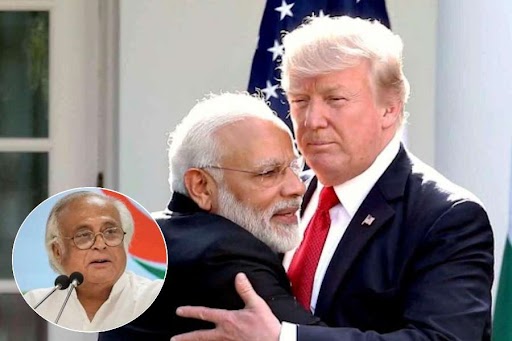|
|
| Universal appeal |
Without doubt the most popular saint-poet of northern India was, and is, Bhakta Kabir. Almost everyone, be he Hindu, Muslim, Sikh or Christian, educated or unlettered, rich or poor, will know a doha or two of Kabir by heart. And yet we have no definitive biography of the man. The popular cherished belief is that he was born in Benaras, of Brahmin parents but adopted and raised by a Muslim weaver’s family. I find that hard to accept. My own reading is that he was the son of a Muslim weaver who was influenced by the teachings of Hindu bhaktas and rose above considerations of caste and religion. In his writings, he always referred to himself as a julaha (weaver).
There are two distinct compilations of Kabir’s poems, his granthavali which is an anthology of his dohas known by rote to millions of Indians, and his slokas incorporated by Guru Arjun in the Adi Granth which are known to those familiar with the Sikh scriptures. Though the message that comes through is the same, the two read quite differently. While the former have been rendered into English many times, the latter have only been rendered by scholars like Macauliffe, Manmohan Singh, Gopal Singh and Talib as parts of their translations of the Adi Granth. For the first time, the Kabir of the Sikh scriptures has been published in translation in a separate book, So Spake Kabira, by Kartar Singh Duggal. He has taken the trouble to render Kabir in poetic form and his translation makes pleasanter reading than renderings by his predecessors. If he had given the opening lines of the slokas in Roman script, it would have made identification easier.
Duggal is among the top three or four writers of Punjabi; his output of novels, short stories or poems would fill a couple of shelves of a library. Rather late in life he realized that Punjabi could take him that far but no further. So he switched to English. He is equally prolific in both languages. I can’t think of another person who could have done more justice to Kabir than Duggal. He is a devout Sikh; his wife is Muslim.
Kabir (1398-1448) was by no means the founder of the Bhakti movement as stated by Duggal. The movement had started more than a couple of centuries earlier in Tamil Nadu and spread northwards. A popular couplet describes its advent and increase:
Bhakti Dravid oopjee, Uttar Ramanand/ Pargat kiyo Kabir nay sapt dweep nav khand.
(Bhakti was born in Dravidean country; brought north by Ramanand;/ Kabir spread it over the seven seas and nine continents.)
Kabir’s message in the simplest words is the total rejection of religious bigotry of any kind. He mocked at the pretensions of mullahs and pandits with equal relish, pointed out the futility of erecting mosques and temples for a god who is all-pervasive and the arrogance of the rich and the powerful who like the poor and the destitute must go into oblivion. He asked, “What is the point of putting bricks and stones together or raise a minaret for the mullah to shout the call for prayer? Has god become hard of hearing? And why bother about the mighty and the rich? They are no better than the date palm which casts a very small shade for the weary traveller and its fruit is far beyond reach?” Kabir accepted the Semitic version of the origin of life and the castless fraternity of humans:
Avval Allah noor upaaya/ Qudrat kay sab bandey/ Ek noor tay sab jag upjea/ Kaun bhaley kaun mandey.
(At first god created light,/ We are creatures of nature;/ From one light came the entire world/ Who then is high and who is low?)
He summed up what the aim of life should be in four memorable lines:
Jab hum aaye jagat mein,/ Jag hassa ham roey;/ Aisee karnee kar chalen/ Jab hum jaayen jagat say/ Ham hassein jag roey.
(When I was born everyone rejoiced but I did cry/ Fill your life with such deeds that/ When you die/ You have a smile on your lips while others cry.)
The late achievers
There are people who find their true vocation somewhat late in life. They are like the autumn crocus which blossoms before the winter takes over; it is this flower which yields saffron used to flavour and add fragrance to pulao, biryani and sweets. The thought came to my mind at the exhibition of works of three ladies at the Habitat Centre: a photographer, a painter and a sculpture in their mid-fifties. Age is all they have in common.
Rita Sawhney is a grandma and a widow. Her children and grandchildren live abroad. First she set up a boutique in Delhi; then with her mother went into readymade garments exports. It did not do well. She took to writing for the papers. Ten years ago she acquired a camera, attended courses in photography and illustrated her articles with pictures taken by herself. In her spare time she plays golf. But she has little time to spare and does one assignment after another travelling by road, rail and aircraft. She has found a purpose and fulfillment in life.
Shanta Bhalla is married but has no children. She has lived in Canada, England, Nigeria and the sub-Sahara. In Canada she conducted writing workshops. Back home she worked for a publishing house and has written two books yet to be published. While living in Calcutta she took to painting. She admits that in her youth, “my soul was yet relatively untouched by life. Two and a half years ago when I applied paint to canvas for the first time after over thirty years, the feeling was indescribably cathartic. Each canvas I have painted since then has engrossed me to the point of exhaustion.”
Uma Gupta is the mother of three children, all living abroad. While visiting her sons in America she developed an interest in ceramics. She went into making pottery. After tiring of making pots and vases, she took to sculpting, first with clay, then with bronze. She has won acclaim in many art exhibitions.
So ladies whether you are single, married, ditched, divorced or widowed and on the wrong side of middle age, don’t waste time sitting idle at home, gossiping, going to cocktail parties; you can be creative and earn the good feeling that you have not wasted your life.
Biblical truth
I was addressing and stamping envelopes at my Christian friend’s home when I ran out of stamps. “I have some in here,” my friend said as he reached for his Bible.
“Now that,” I said, “just goes to show that if you need help, turn to the Bible.”
“I also keep my petty cash in here,” he replied. “It’s a good place to hide things. The ones who do open the Bible wouldn’t steal from it, and the ones who would steal never open it.”
(Contributed by Reeten Ganguly, Silchar)











